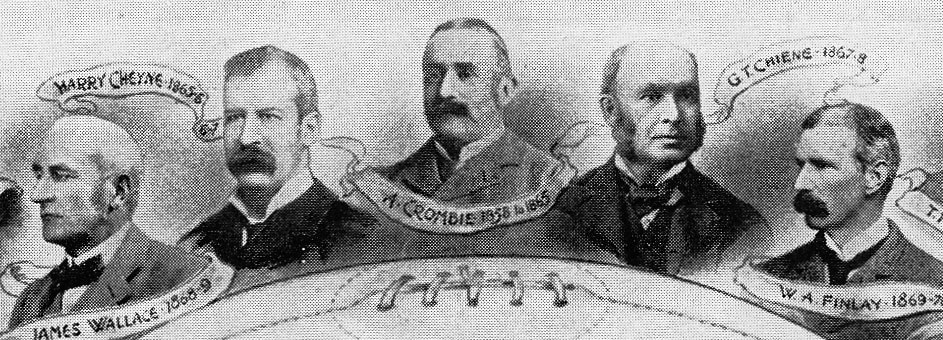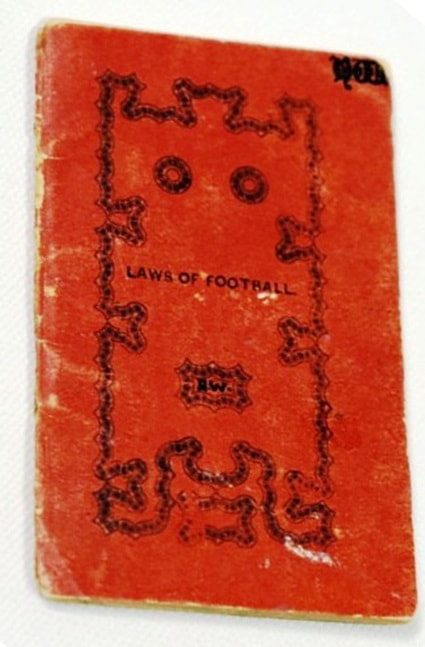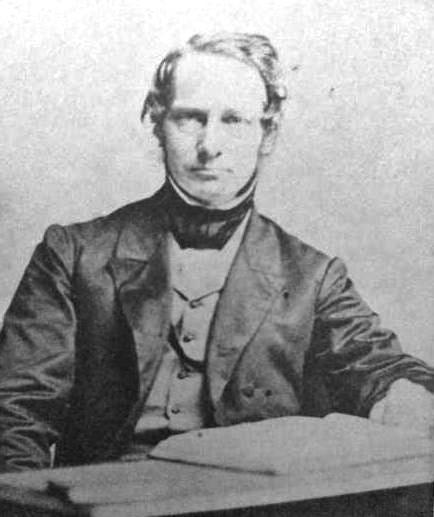What intrigued me was, why had the Crombies been in Durham in the first place? The Crombie family had been living in Edinburgh for over ten years by this time.
In fact, it was all due to a shameless charlatan of a schoolteacher - a fascinating example of how unconnected events can lead to an unexpected outcome.
Alexander and Francis were born in 1836 and 1838 respectively at Thornton Castle, the family seat, then lived in Kent with their lawyer father (also called Alexander) before they all settled in Edinburgh New Town around 1843.
In 1847, when they were aged 10 and 9, both boys went to Merchiston Castle School on the outskirts of Edinburgh. They probably played football here, as the school had a playing field directly opposite. But more importantly they were taught by a charismatic teacher called Edward Humphreys.
In 1850, Humphreys left Merchiston to set up his own private school, Salisbury House in Newington, and the Crombie boys followed him there. They boarded, despite the family home being so close, and did well, judging by the number of prizes they won.
Then early in 1852, out of the blue, Humphreys was appointed as headmaster of Cheltenham Grammar School (now known as Pate's). With little regard for his existing pupils, he closed his school in Edinburgh immediately, and took up his new post.
This left parents and pupils in the lurch, and Alexander Crombie senior had to find a new school for his two boys in a hurry. For whatever reason, he chose Durham and they enrolled there in March 1852.
Durham Grammar had recently taken up Rugby rules for school football, and therefore the brothers learned to play football that way. Alexander stayed until December 1853, while Francis remained until the autumn of 1854 when he came home to complete his education at Edinburgh Academy.
By the end of the decade, the Rugby code had gained widespread popularity. Not until 1867 was the non-handling association football taken up by Queen’s Park in Glasgow, and the association game did not reach Edinburgh until 1873.
Meanwhile, elder brother Alexander matriculated at Edinburgh University to study Law, and while there he helped to found the Academical Football Club early in 1858, becoming its first captain.
The Crombie brothers are rightly credited with introducing Rugby football to Scotland, but what is particularly interesting is the back story to Mr Humphreys, the disappearing teacher. He was a fake academic and a financial fraud.
Edward Rupert Humphreys was born in Dublin in 1820, and went to Heversham School in Westmorland before matriculating at Cambridge University in 1836 to study medicine. He did not graduate and in 1838 was listed as an insolvent debtor.
He found a teaching post near Manchester, where he married in 1841, but two years later was declared insolvent for a second time. His response was to run away and somehow he landed a job as head master of a school on Prince Edward Island, in what is now Canada.
In four years there, during which his first wife died and he remarried, Humphreys did such a good job at reinventing himself that in 1848 he was able to return to Britain as Head Classical and English master at Merchiston Castle School in Edinburgh. What is more, he acquired credibility by writing textbooks, becoming a Fellow of the Educational Institute of Scotland, and crowned it all in 1850 by persuading both Edinburgh and Aberdeen Universities to give him honorary degrees.
What they based their decisions on is not recorded but he could now legitimately describe himself as Reverend Dr Humphreys LLD. He was, to all intents and purposes, an outstanding teacher and scholar, and on that basis, he left Merchiston in 1850 and set up his own school across the city in Salisbury Place.
However, although the school promised much it seems to have struggled as there were constant adverts in the local papers for new recruits. Hence when Cheltenham Grammar School advertised for a new head, Humphreys had no qualms about applying and abandoning his own school in the middle of the session.
Cheltenham had been flagging for years and in 1852 he set about restoring the school’s fortunes with gusto. He introduced science to the curriculum – for which he was personally thanked by Prince Albert – increased the school roll, was popular with parents and governors, and held in such high regard that even when he was successfully prosecuted for flogging a boy, he was applauded on his return to school.
However, he borrowed heavily and ran up extensive debts, reported to have reached £26,000. In 1859, for the third time, he was declared insolvent in the London Gazette and his response, yet again, was to disappear across the Atlantic. If that was not bad enough, he scandalised the town by doing so with the wife of one of the school governors (who was also one of his debtors), each of them abandoning a large family. The newspapers were full of the affair, and although a tearful Emily Comyn came home a couple of months later, Humphreys never returned. He would have faced a substantial claim for damages had he done so.
Yet, astonishingly, he reinvented himself in Boston where carried on teaching as if nothing had happened. In those pre-internet days, it is not as if anyone could google him. He was appointed Principal of South End Collegiate School, became a naturalised American, and even persuaded his wife Margaret and six children to join him there. Perhaps anything was better than the scorn they faced in Cheltenham.
Humphreys escaped scandal to such an extent that when he died in 1893 the Gloucester Journal described the former headmaster as ‘a distinguished classical scholar’ without any reference to his murky past. Humphreys was undoubtedly a charlatan, but without his shameless behaviour the history of Scottish sport might have been very different.
As a postscript, the son named after the rugby-playing family, Alexander Crombie Humphreys (1851-1927), went on to have a legitimately brilliant academic career, rising to be president of the Stevens Institute of Technology in New Jersey, and is known as the father of engineering economics.



 RSS Feed
RSS Feed